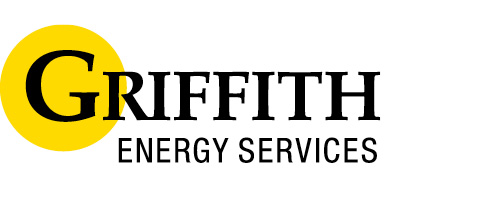Unfortunately, a lot of the tips you’ll find for saving energy and lowering the utility bills in your Baltimore, Maryland, home just aren’t accurate. Many people get misleading advice from their parents or grandparents. Technology today is much more efficient and advanced than it was 25 or even 50 years ago when well-meaning relatives or friends first heard these tips. Some tips are mostly correct, but the energy savings you could get aren’t worth the cost and effort of following the advice.
When someone tells you about a great way to save energy, always check the facts with an HVAC professional. Here the top nine home energy myths, along with some great ways for you to actually lower your energy bills.
Myth #1: Closing Unused Rooms Saves Energy
Back when people mostly used wood stoves or fireplaces to heat their homes, they closed off the unused areas of their houses to conserve heat. Unfortunately, that doesn’t work with today’s heating and air conditioning systems. Closing doors or blocking air registers will actually force your system to work harder, wasting energy and causing mechanical problems. It could even ruin your compressor, meaning you’ll have to replace your unit. Leave all your vents and doors open so that air can circulate freely through your home.
Myth #2: Using a Fireplace Saves Money
Fireplaces in winter feel warm and cozy, but they won’t lower your utility bills. Wood fireplaces lose most of their heat through the chimney. You have to open their dampers to vent toxic gases like carbon monoxide, and even then some of these toxins stay in your home. Fireplace dampers let in as much outside air as opening a window, forcing you to turn up your thermostat. You should wait until the embers are out to close the damper again.
Gas fireplaces have a glass shield in front of the flames that increases their efficiency, but they still waste some energy. Because of the shield, you won’t have to remember to open and close your damper every time you use your fireplace.
Myth #3: Replacing Your Windows Will Result in Significant Savings
Energy-efficient dual-pane windows can help lower your utility bills, but these new windows are very expensive, and the energy savings won’t make up for the cost for a long time. There are lots of more effective ways to save energy. Single-pane storm windows are more economical. If you don’t need to open your windows, you can use indoor window film, which sticks to window panes with heat from a hair dryer.
If you see light coming through the bottom of a door or window, add weatherstripping to stop drafts. You should replace it every few years to avoid too much wear. You can also add caulk to windows to keep them from rattling in their frames and fix any smaller leaks.
Myth #4: You Can Heat or Cool Rooms Faster by Turning the Thermostat on High
When your air conditioner or furnace is running, it’s always working at its maximum capacity. That means you can’t heat or cool your home faster by setting the thermostat very high or low. You’re more likely to waste energy by forgetting to adjust your HVAC system once it reaches the temperature you actually want, making your home too hot or cold.
Myth #5: You Should Always Keep the Temperature in Your Home Constant
Adjusting the temperature in your home too often could waste energy, especially if you like to stay warm, another family member prefers cooler temperatures, and you both turn the thermostat up and down constantly. However, keeping your temperature constant is more of a waste most of the time. There’s no reason to condition an empty house.
To keep your family members comfortable without that waste, invest in a programmable thermostat to raise or lower the temperature of your home automatically when you’re away or asleep to save energy, and then adjust it again before you wake up or come home. Then you won’t have to wait for your HVAC system to make your home comfortable after you get back from work or vacation. Many models can control different zones so that family members can set their own preferences and you never have to heat or cool an unoccupied area. You can even connect with some devices through your smartphone.
Myth #6: Ceiling Fans Can Keep Your Home Cool When You’re Not There
Fans circulate the air, but they don’t really cool it. They just make the air feel cooler. Even if a ceiling fan could actually cool your home, using it when no one is around would be a waste of energy. People who believe they should keep their home a constant temperature often believe this myth as well.
You can use ceiling fans to save energy, but only if you use them in occupied rooms. Since they make the air feel cooler, you can set the thermostat higher in summer while using them. Most fans also have a winter setting to circulate heat through a room and make it feel warmer. If you feel a cool breeze when you stand directly under your fan, it’s on the summer setting. To change it, climb a ladder or stepladder and flip the small switch in the center.
Myth #7: Electronics Don’t Use Energy When They’re Off
Most devices actually keep using power even when they’re off. These devices, called energy vampires, use almost as much power as when they’re on. People also call this power consumption standby power and you can stop it by unplugging your appliances. Plug electronics and appliances into surge protectors and turn the surge protectors off when you’re not using the devices to avoid unnecessary energy use. You can also turn power outlets on and off with some light switches.
A few decades ago, turning computers, video game consoles, and other devices on and off often reduced their lifespan and used more power than keeping them on. Today’s electronics don’t use a lot of power when you turn them on, and keeping them off as much as possible helps them last longer.
Myth #8: Duct Tape Works Well for Sealing Ducts
This myth sounds like a no-brainer, but duct tape has a very misleading name. It doesn’t work well on dusty, dirty surfaces like ductwork, and it often falls off after a while. The adhesive also tends to dry out and wrinkle, losing its effectiveness. When treated with duct tape, the leaks in your ducts will increase your energy bills and cause hot and cold spots in your home over time.
A better option is mastic sealant. This gummy, flexible, waterproof substance never fully hardens, allowing it to expand and contract as your ducts change temperature. It’s also waterproof, so any condensation on cold ductwork won’t lower its effectiveness. For areas under stress or that have larger leaks, professionals use fiberglass reinforced mesh tape with mastic. Synthetic mastic is less expensive, but mastic made from tree sap is also available. It comes in several different colors to blend in with visible ducts in basements and other areas.
Myth #9: You Don’t Have to Check Your HVAC System Unless There’s a Problem
Some people get lucky and never have problems with their system, even without regular maintenance, but your HVAC system is just like your car. Tune-ups from a professional in spring and fall will keep your heater and air conditioner running at peak efficiency, extend your system’s life, and help you avoid inconvenient, expensive breakdowns. If you don’t maintain your system, a minor problem could become so severe that you have to replace the whole thing.
You can take care of some HVAC maintenance yourself. Check your air filter every month and change it when it gets dirty. A clogged filter reduces your indoor air quality and forces your system to work harder. You should also remove debris like leaves, twigs, pine needles, and grass clippings from your outdoor unit about once per month.
Griffith Energy Services has over 100 years of experience, so we know the difference between misleading myths and essential truths. We can help you save energy, keep your HVAC system in great shape, and install a newer, more efficient system when you’re ready. Call us anytime at 888-474-3391 for great service.
Image provided by Shutterstock




